Oil substitutes for baking include fruits, yogurt, and even tofu.
So if you’ve run out or need something low-calorie, these oil alternatives should do the trick.
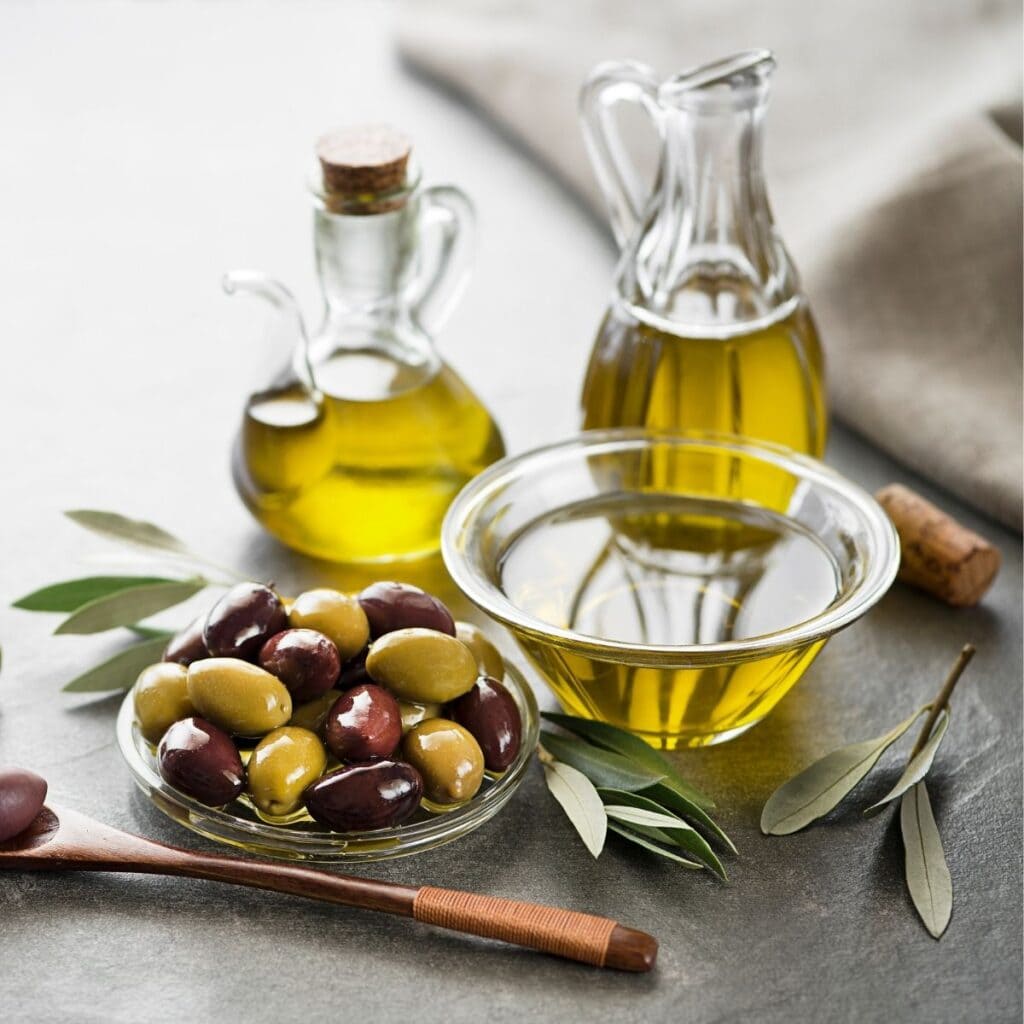
Oil is used to keep cakes and cookies moist and tender. But adding moisture doesn’t have to mean adding fat.
Of course, certain options (like butter) will make your bakes extra rich and flavorful.
But there are also plenty of healthy oil alternatives for baking, such as applesauce or mashed bananas.
That said, when choosing between these oil substitutes for baking, be sure to think about the flavor of the final product.
After all, nobody wants banana-flavored naan bread, right?
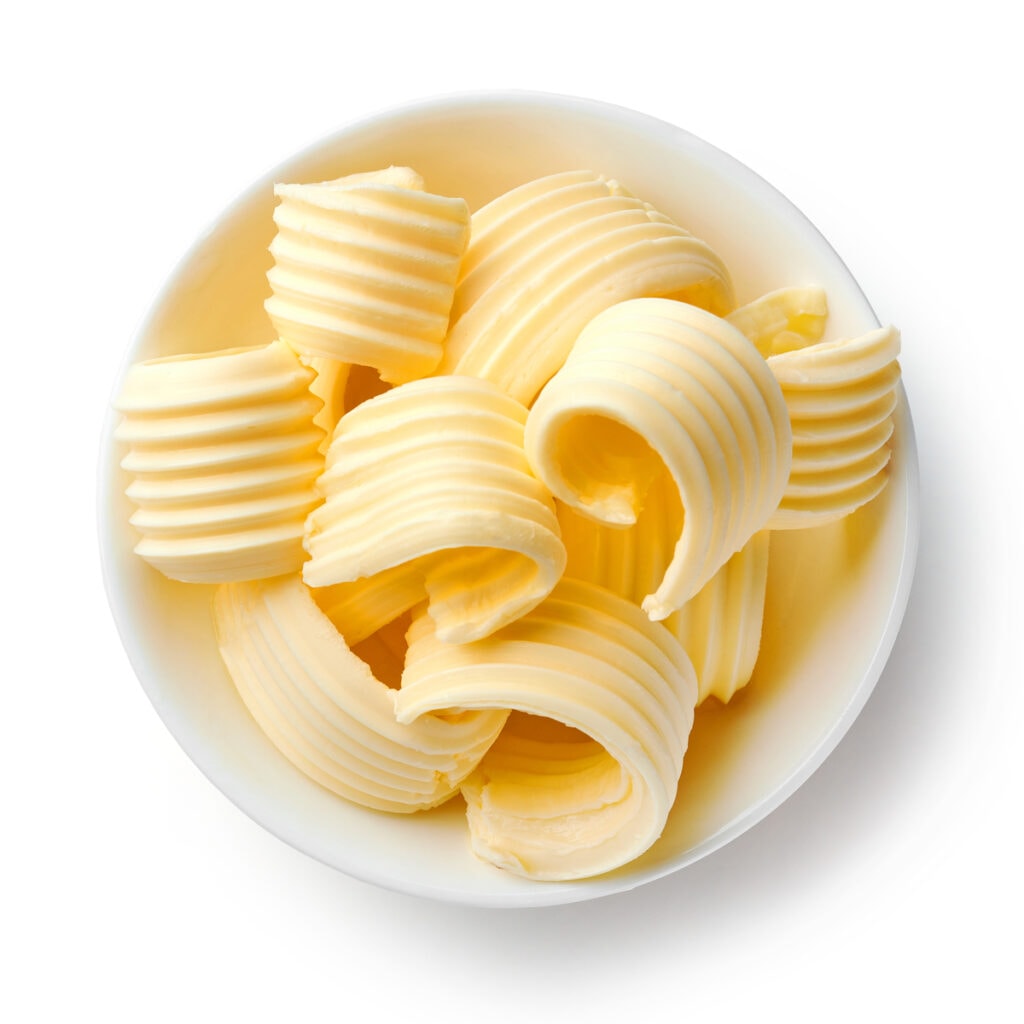
1. Butter
Everything tastes better with butter!
Okay, so butter isn’t exactly a healthy swap. But, it’s a terrific alternative to infuse a little extra flavor into your bakes.
Butter adds richness and fantastic creaminess, but your bake may become dense once it reaches room temperature.
The reason is that oil is liquid at room temperature, which keeps cakes nice and fluffy once they cool.
In contrast, butter turns back into a solid at room temperature, which will make your bakes slightly denser.
Think of that favorite pound cake your mom always used to make. It’s super flavorful but pretty heavy, right? That’s the butter!
How To Substitute Oil for Butter
It’s pretty easy to substitute oil for butter. It’s pretty much a one-for-one swap.
So, if you need ½ cup of oil, you’ll use ½ cup of melted butter in its place.
One thing to keep in mind: if the recipe calls for oil, and you opt for butter instead, be sure that you melt it first.
You need it to be liquid, or the consistency of the whole batter will change.
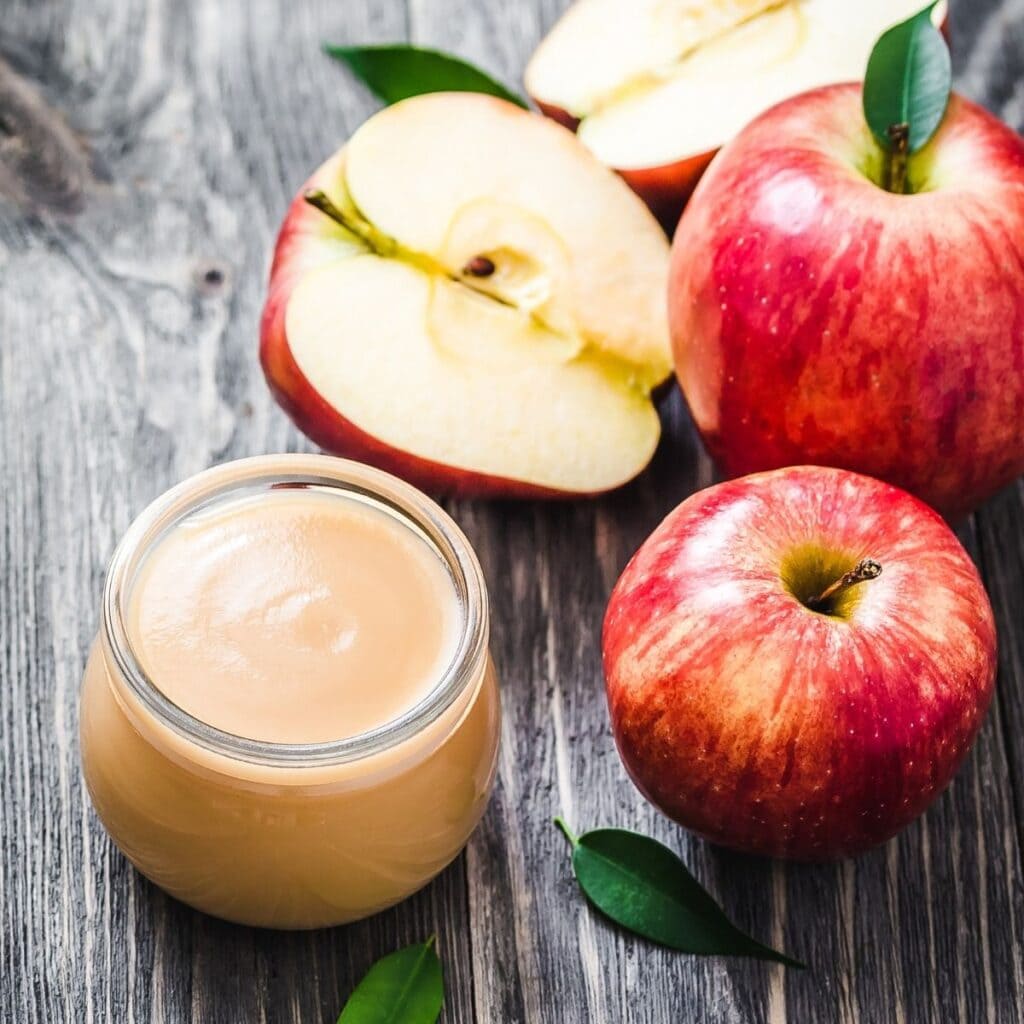
2. Unsweetened Applesauce
Applesauce is another excellent way to infuse a massive amount of moisture into your bakes, sans the calories.
The high moisture content in applesauce makes your bakes deliciously chewy. So you can use it in everything from muffins and cakes to bread.
That said, if you prefer crunchy cookies, applesauce may not be ideal.
It’s also important to note that unsweetened applesauce is essential.
Sweetened applesauce contains a lot of added sugars – 15 more grams of sugar per serving on average.
Using unsweetened applesauce allows you to stick to your recipe without the need to adjust added sugars.
You can opt for storebought homemade apple sauce or try making your own at home.
How To Substitute Oil for Applesauce
It’s super easy to swap out oil for applesauce. You just need equal amounts.
So 1/2 cup of oil would be replaced with 1/2 cup of applesauce.
Better still, a half-cup of applesauce contains 51 calories versus a whopping 964 calories in an equal amount of oil!
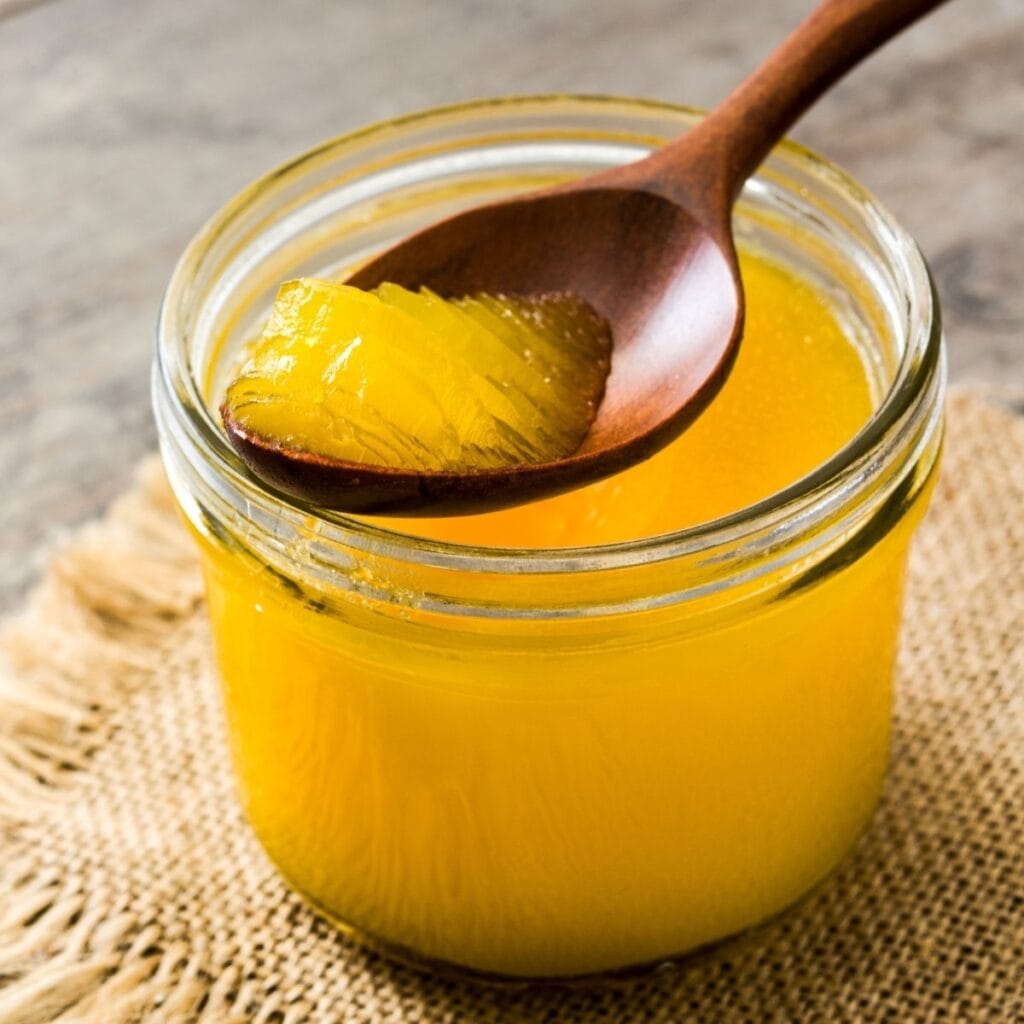
3. Ghee
If you want that same nutty flavor profile found in butter without the extra fat and calories, ghee is an excellent alternative.
Ghee infuses your bakes with a robust nutty flavor while keeping the batter nice and moist.
It’s important to note that ghee is heat-treated to remove milk solids and water. Also, recipes with ghee brown more quickly, so check in on the oven frequently!
When used as a replacement for oil, your batter may seem a little drier than usual. Just add a little water if that’s the case.
Ghee works best in crispy desserts, like crumbly chocolate chip cookies.
How To Substitute Oil for Ghee
Since ghee is different from butter, a slightly different ratio is used when substituting it for oil.
As mentioned, it can leave your bakes a little dryer, which is why many people use extra ghee to make up for that lack of moisture.
So, for every 3/4 cups of oil, you should use 1 cup of ghee.
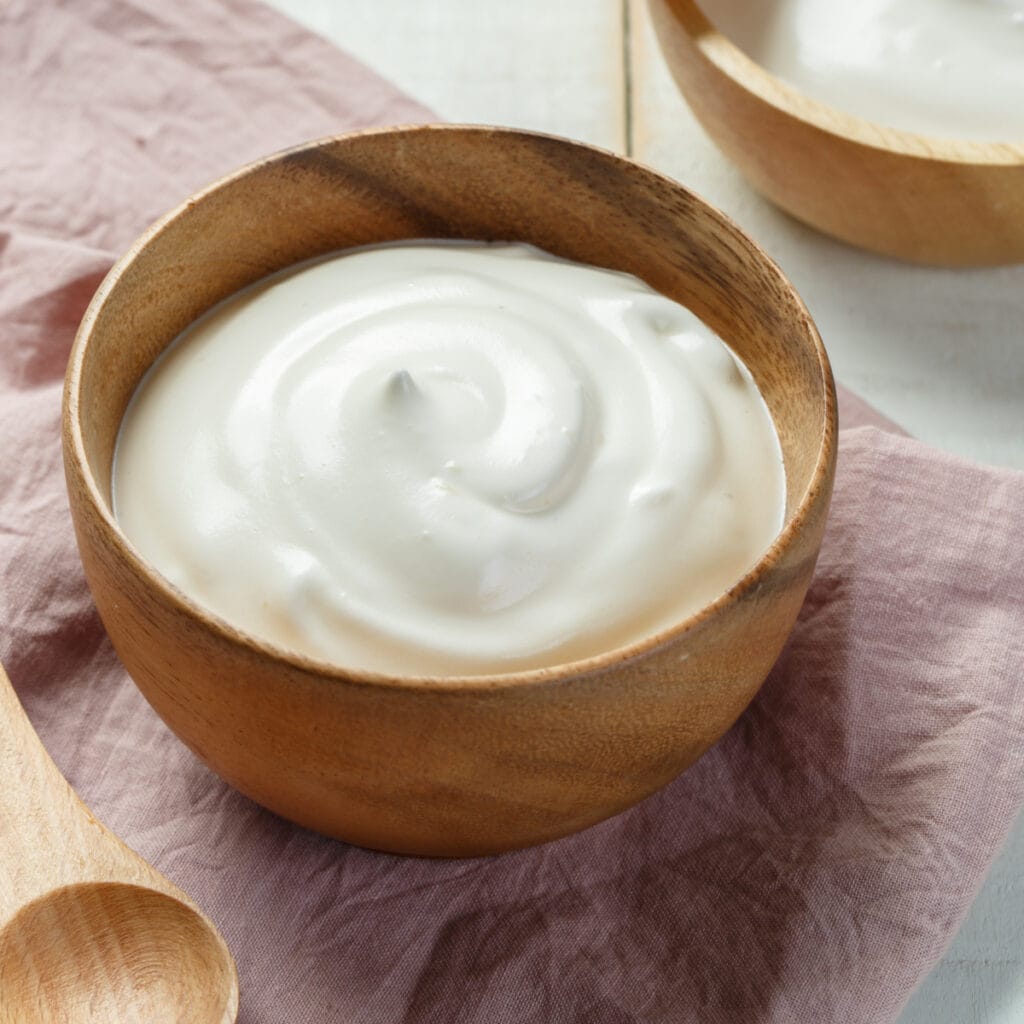
4. Yogurt
Yogurt infuses a good deal of moisture into your bake while keeping the calorie count low.
In some cases, yogurt will even make your bakes more fluffy, thanks to the acidic base, which reacts well with baking soda.
It also allows you to play around with the flavor profile of your dish.
For example, if you’re whipping up a loaf of banana bread, opting for banana-flavored yogurt turns the banana dial to an 11!
Of course, the higher protein content will also make your bakes more filling. And if you want to keep the calorie count low, low-fat yogurt is the best option.
Low-fat still has all of the beneficial health benefits without added calories.
How To Substitute Oil for Yogurt
When using regular yogurt, you can swap it for oil on a one-to-one basis. That means you’ll need 1 cup for 1 cup.
However, if you’re using Greek yogurt, which is thick and loaded with protein, you’ll use 3/4 cups of yogurt for every 1 cup of oil.
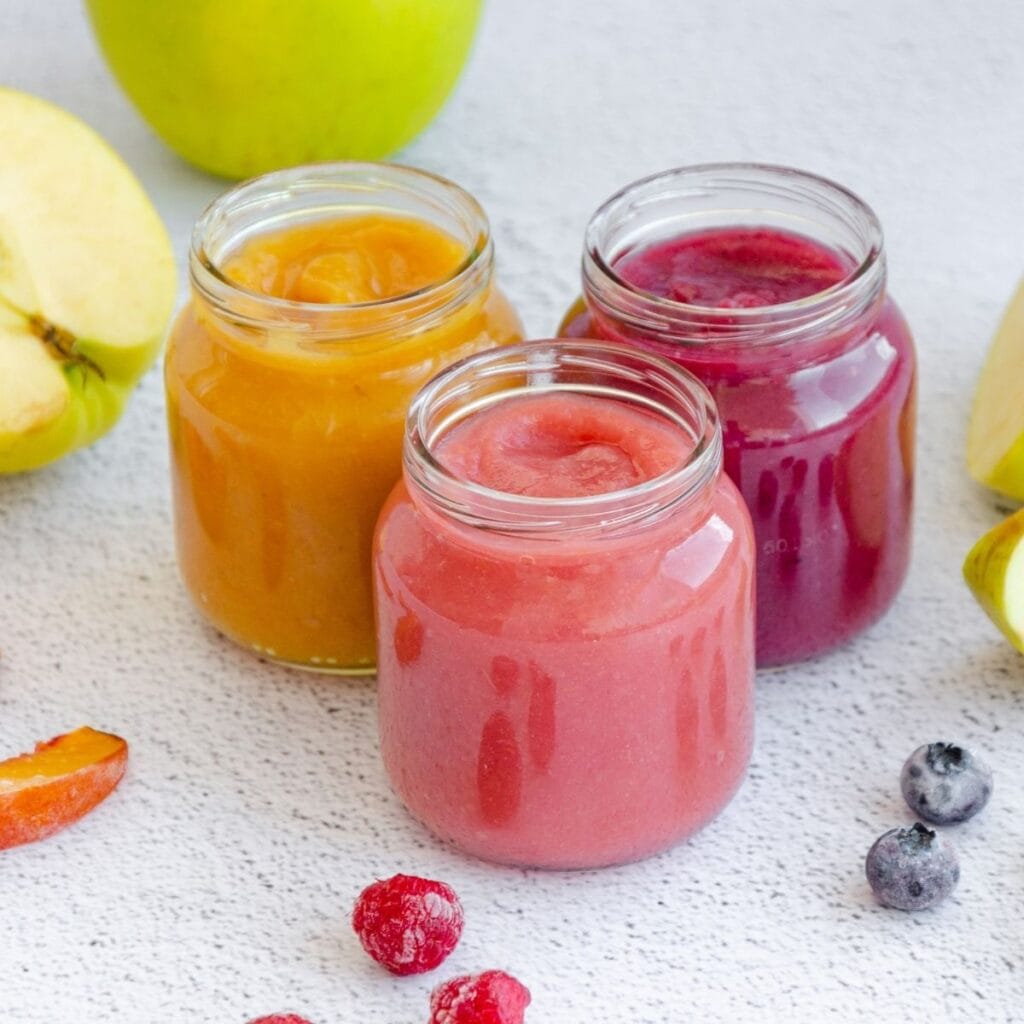
5. Pureed Fruits and Veggies
Pureeing fruits is super simple, and you can even use frozen fruits to save some money. It stores easily in the freezer and lasts up to 8 months.
Pureed fruits and veggies allow you to add moisture content while sneaking some nutrition into your desserts (win-win!).
It’s my favorite way to infuse moisture because it brings a boatload of flavor with it.
For example, frozen berries in a muffin batter will make them wonderfully fruit.
It’s just like adding pumpkin puree to your favorite loaf!
How To Substitute Oil for Pureed Fruits and Veggies
Place your fruits or veggies on the stove and cook them down for around 10 minutes.
Make sure that your stir frequently!
Once they’re nice and soft, use an immersion blend (or pop them into a blender) to make a delicious puree.
Once they’re smooth and cooled, use them in a one-to-one ratio.
Keep in mind that when using sweeter fruits (like cherries), you’ll likely need to lower the added sugar content of the overall recipe.
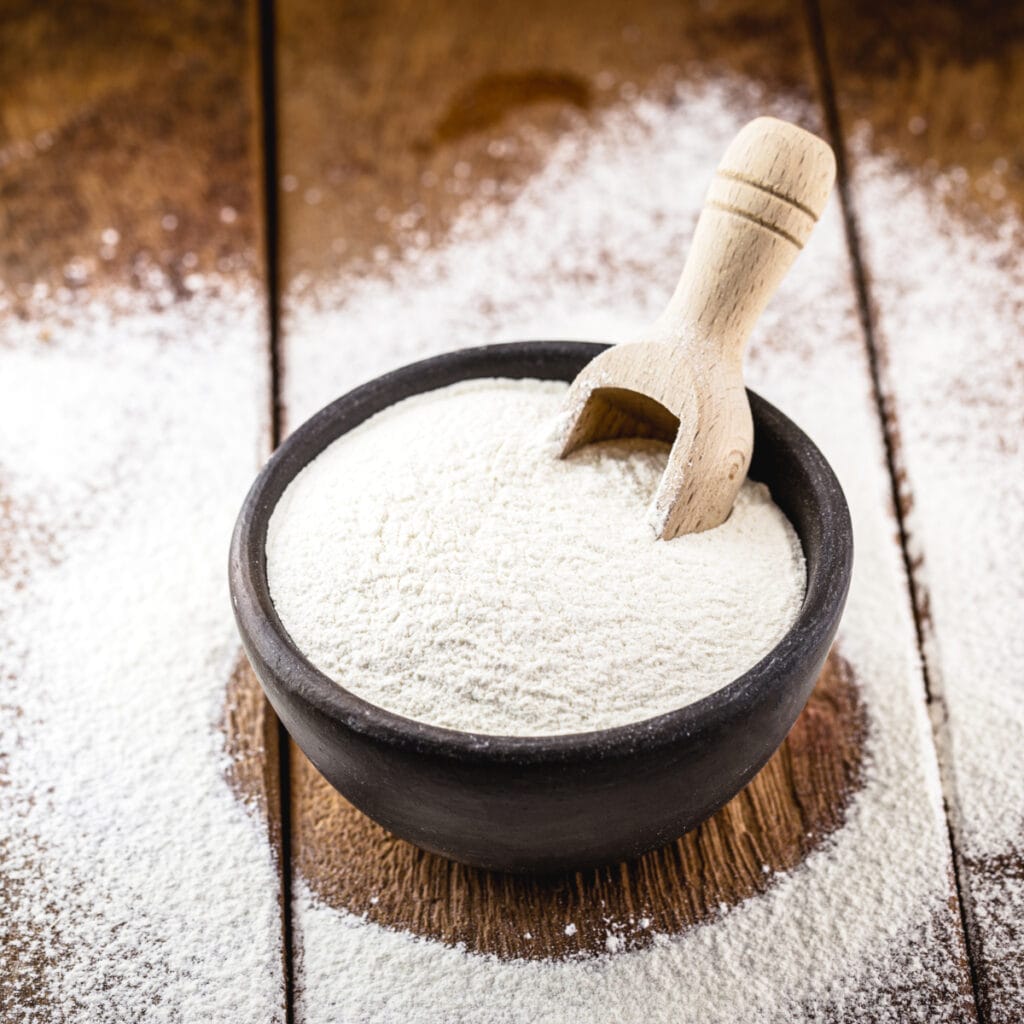
6. Cornstarch
I know it sounds a little strange, but cornstarch slurry, also known as ‘non-oil,’ serves the function of oil in baking.
The most significant difference is that it is free of excess calories or fat.
Using cornstarch keeps your bakes nice and moist while keeping calories almost non-existent.
It requires a few extra steps to make this ‘thick water,’ but it’s the kind of ingredient you almost always have on hand.
The downside to cornstarch is that it won’t add any flavor like pureed vegetables or butter.
On its own, it’s flavorless. However, it’s a great low-calorie option to keep bakes moist, fluffy, and guilt-free.
How To Substitute Oil for Cornstarch
To make thick water:
- Add 3 teaspoons of cornstarch to 2 cups of water and bring it to a boil.
- Stir the slurry frequently until it achieves an oil-like consistency.
- Add more cornstarch or water as needed.
When it’s cooked, you can add it in equal parts.
However, you should note that this is not the best option for recipes with a lot of oil.
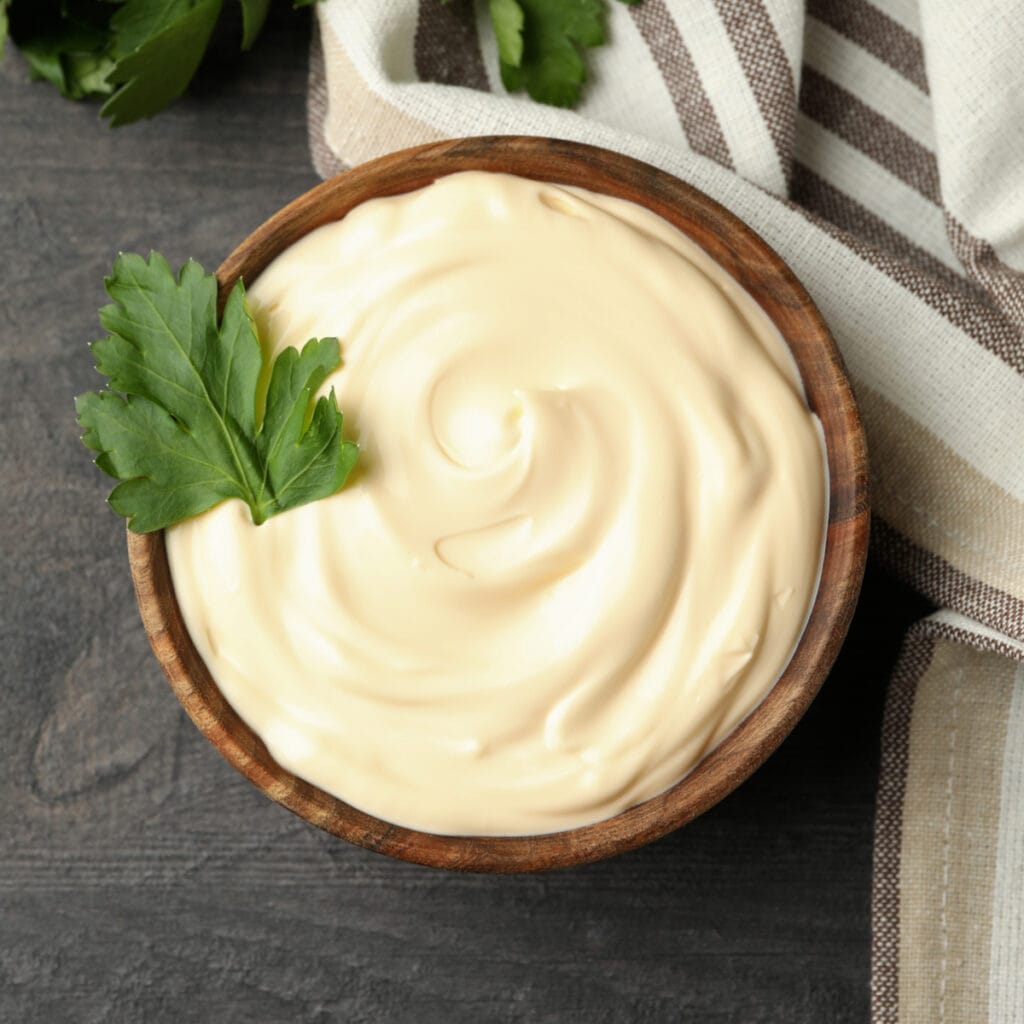
7. Mayonnaise
More often than not, the secret ingredient in impossibly moist cakes is mayonnaise.
Mayo keeps your bake nice and fluffy, and the extra egg locks in moisture.
In addition, the touch of vinegar boosts flavor, making chocolate cakes especially scrumptious.
Swapping oil for mayo is a superb way to hack a bland boxed cake mix. It’s slightly more nutritious than oil and a great way to boost the flavor profile.
When selecting a mayonnaise to use when baking, avoid light mayo.
Light mayo is excellent when you want to reduce the calories on a sandwich, but it will negatively affect your baking.
Plus, it has a higher water content than full-fat mayo (and fewer eggs), making your cake dry.
How To Substitute Oil for Mayo
Just like butter, you can swap oil for mayo in equal parts. That means 1 cup of oil would become 1 cup of mayo.
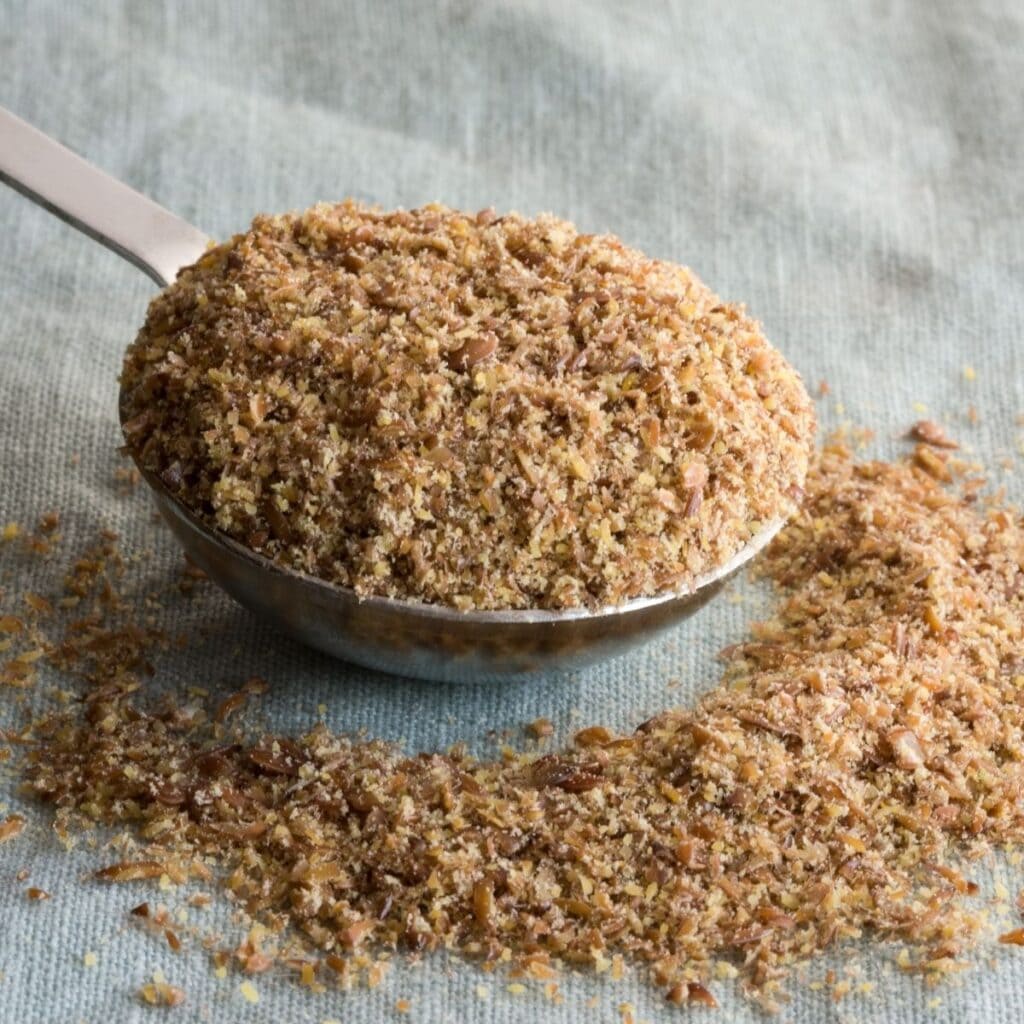
8. Flaxseed Meal
Flaxseed meal will sneak some fiber and omega-3s into your desserts. It can even help regulate your blood sugar!
It’s important to note that swapping flaxseed makes your batter a little drier, and it will brown much more quickly than oil.
When baking, check in on your dessert to ensure that it’s not burning!
How To Substitute Oil for Flaxseed Meal
Unlike many of the other oil replacements, flaxseed meal isn’t a 1:1 swap.
If your recipe calls for 1 tablespoon of oil, you need 3 tablespoons of flaxseed meal.
Also, note that flaxseed meal is only a suitable replacement for recipes that call for 1/4 cup oil or less.
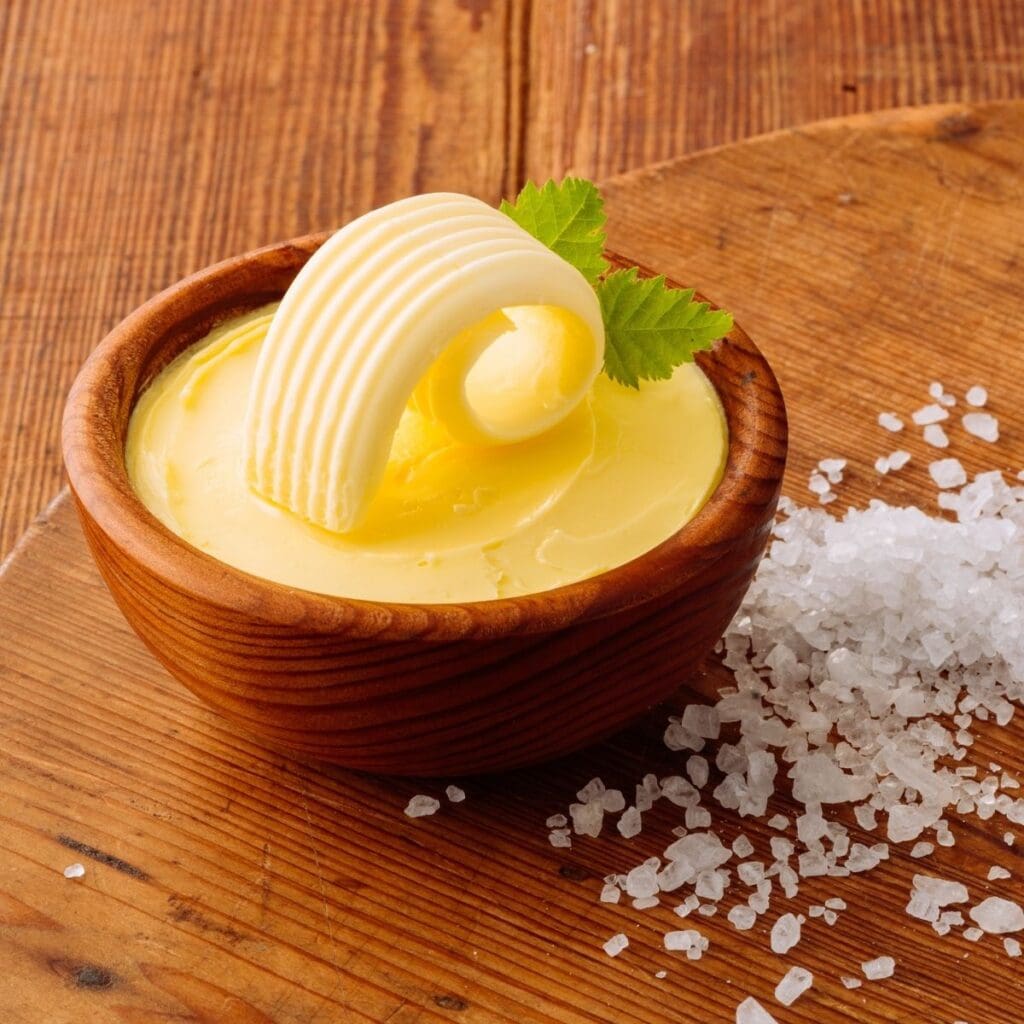
9. Margarine
Margarine offers the same nutty goodness found in butter, sans milk.
In fact, the main ingredient in most margarine brands is vegetable oil. So, it’s very similar to oil, with just a few slight changes in taste and texture.
When using margarine, it’s important that you select the right kind.
Spreadable margarine has a higher water content than the sticks, which means it’s not great for baking.
If you use spreadable margarine, the higher water content will dry out your dessert.
The good news is that most margarine is considered vegan, so it’s a perfect swap for your vegan desserts. Just be sure to read the label first!
How To Substitute Oil for Margarine
Like butter, you can swap margarine for oil in equal parts. It also needs to be melted in order to maintain the consistency of the batter.
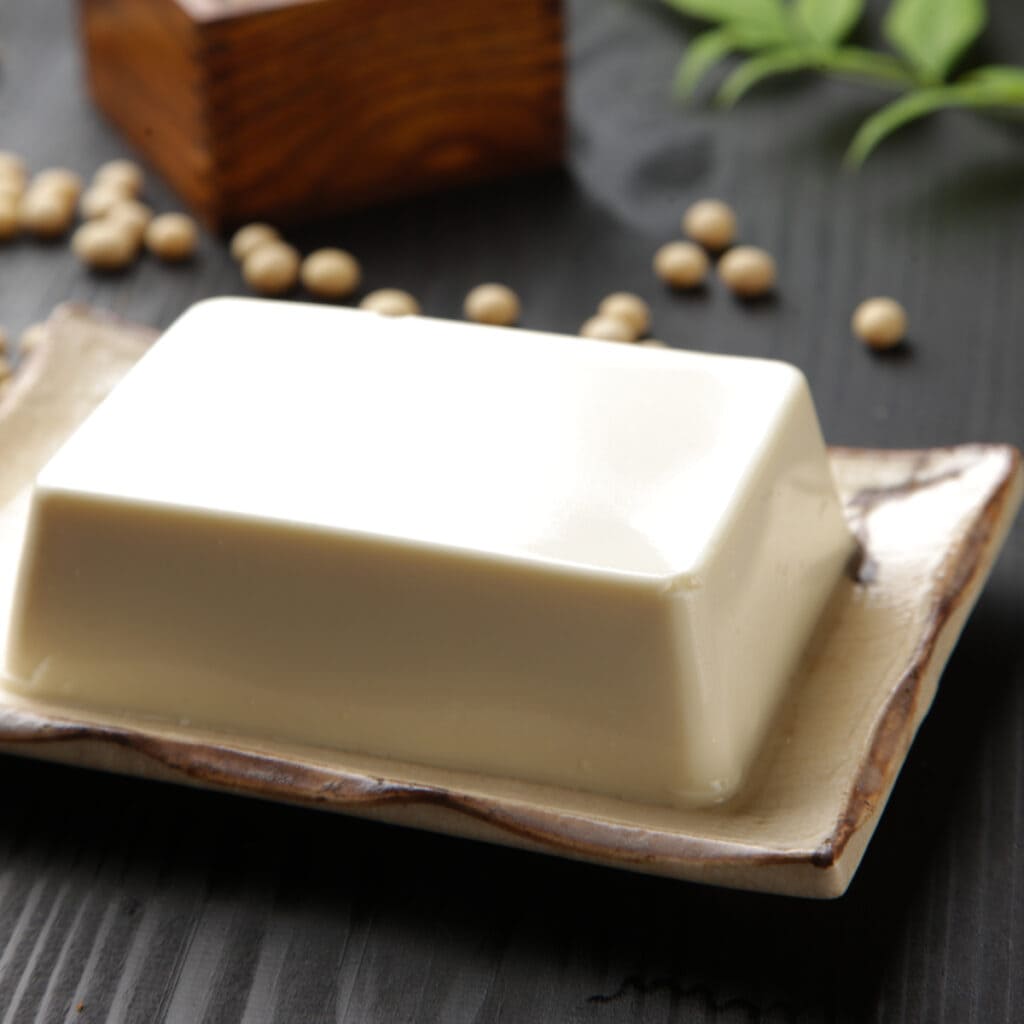
10. Silken Tofu
Silken tofu is the perfect swap for dense, chewy desserts like chocolate chip cookies or brownies.
Infused with plenty of protein, it’ll even make your desserts healthy and nutritious.
It’s important to note that your batter won’t have the same consistency as oil, and it may be slightly thicker than expected.
I like only swapping tofu for oil in dense and chewy bakes like brownies, muffins, and chocolate chip cookies.
How To Substitute Oil for Silken Tofu
Leave your tofu press in the cupboard – you won’t need it for this!
Place a block of tofu in a blender, and pulse until it becomes creamy. Once blended, pour it into a measuring cup and add it to your batter.
Tofu and oil are not a 1:1 ratio. For example, if your recipe calls for ½ cup oil, you only need ⅓ cup of silken tofu.
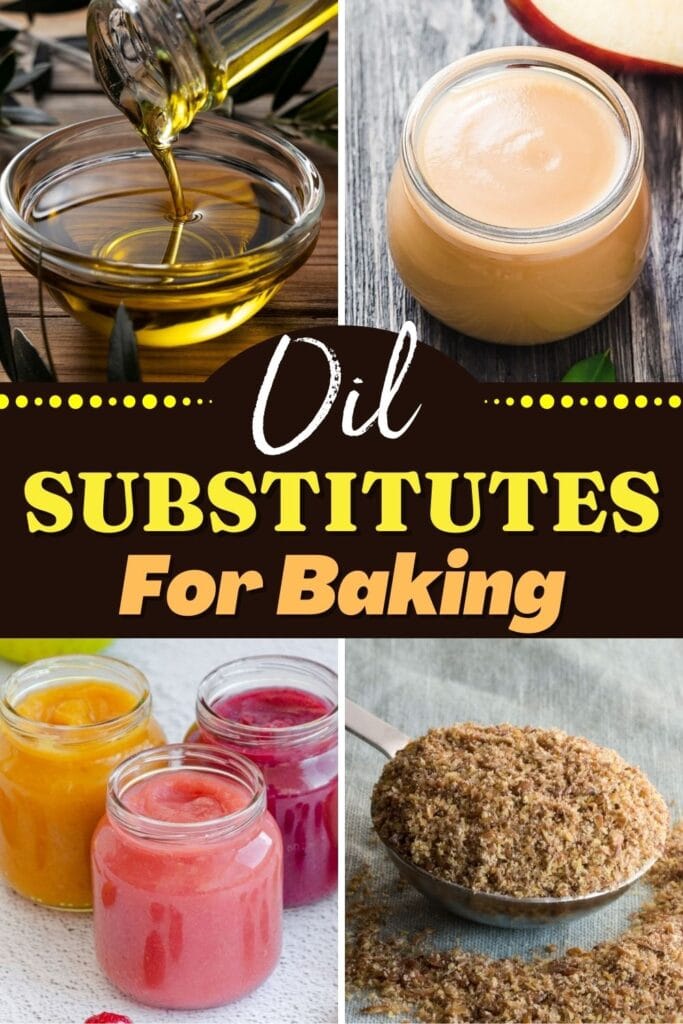

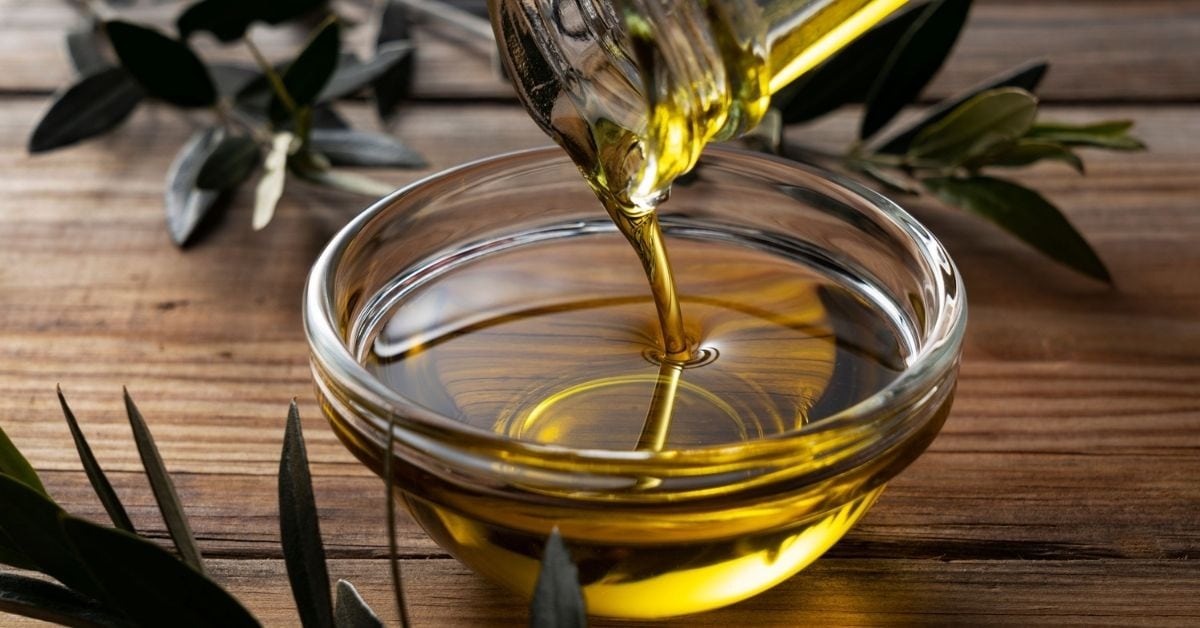



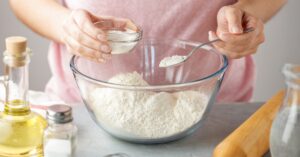

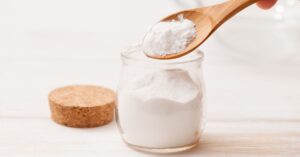
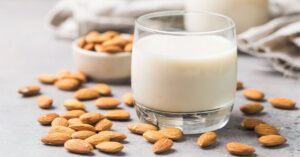

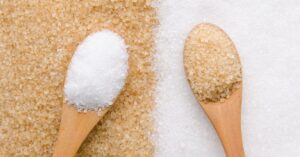
Hi! Great suggestions! Just wanted to share that generally mayonnaise doesn’t contain dairy, mostly it’s egg and oil 🙂
Hi Stephanie, thanks so much for pointing that out! I have updated the post to reflect the change. 🙂
Thank you for this helpful information. Regarding you comments about ghee, however, I understand that the fat and calorie differences between it and butter are negligible, with ghee having a slightly higher concentration of both.